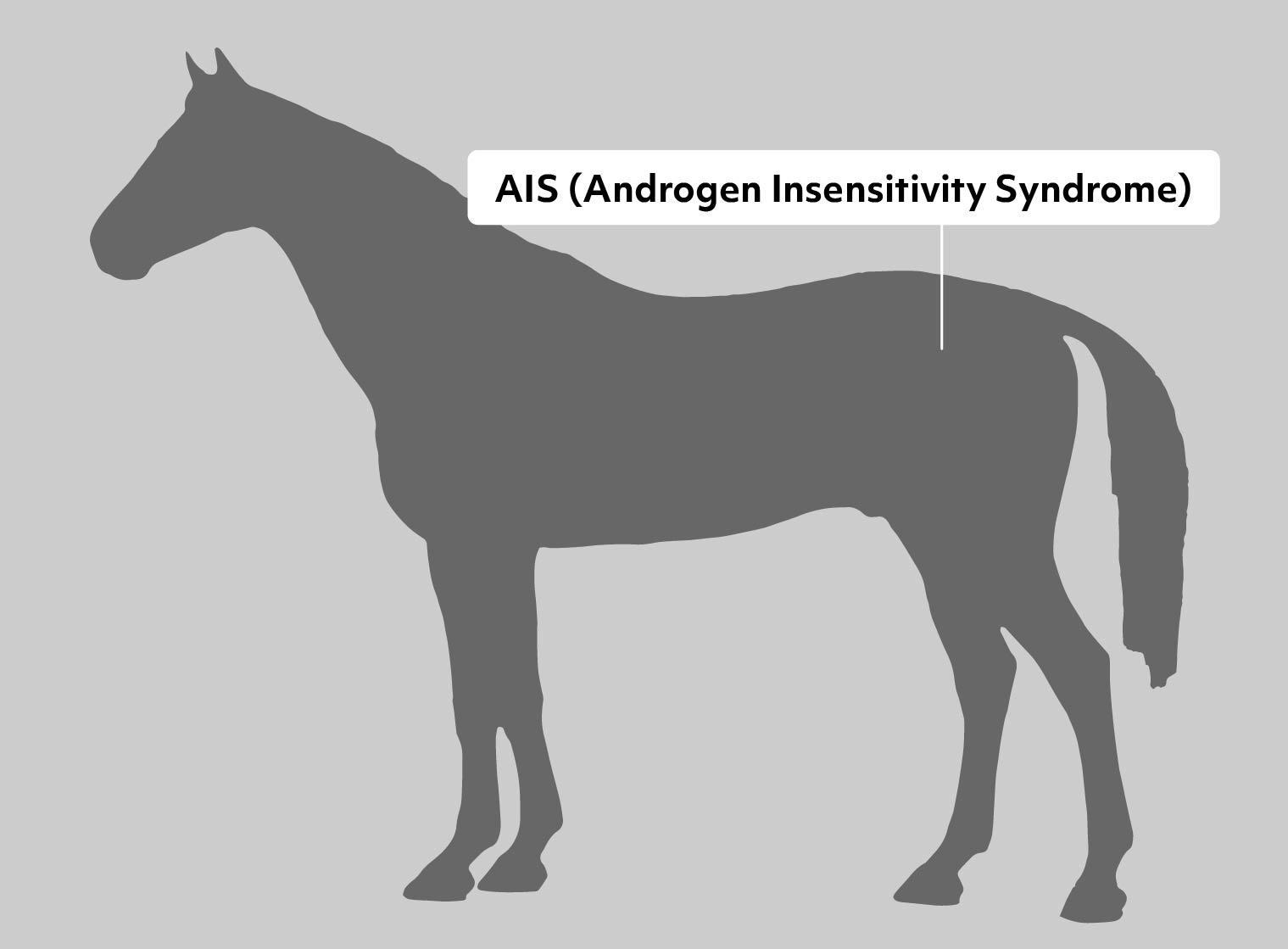Androgen Insensitivity Syndrome (AIS)
Gene or Region: AR
Reference Variant: A
Mutant Variant: G
Affected Breeds: Quarter Horses
Research Confidence: High - Findings supported by other species
Explanation of Results: AIS/AIS = homozygous for Androgen Insensitivity Syndrome, not observed AIS/n (female) = heterozygous for Androgen Insensitivity Syndrome, female carrier AIS/n (male) = heterozygous for Androgen Insensitivity Syndrome, sterile and phenotypically female n/n = no variant detected
General Description for Androgen Insensitivity Syndrome
Androgen Insensitivity Syndrome (AIS), previously known as Testicular Feminization Syndrome, is a disorder of sexual development in which a horse with a XY SRY+ karyotype appears female. Horses with AIS exhibit stallion-like behaviors, have external female genitalia, and often internal un-descended testicles.
AR is a steroid-activated transcription factor that plays a key role in normal sexual development. Mutations in other species have been noted to cause AIS and have been associated with prostate cancer. This particular mutation is a single base change that alters the start codon of the encoded protein. Though normal transcription and translation still occurs, the encoded protein likes has an altered function.
References
Révay T et al., “GTG mutation in the start codon of the androgen receptor gene in a family of horses with 64,XY disorder of sex development.” (2012) Sex Dev. 6: 108-16. PMID: 22095250
More Horse Health
Hydrocephalus
Hydrocephalus (HDC) is an abnormal build up of cerebral spinal fluid around the brain. It is believed that a narrowed passage within the brain prevents normal fluid absorption, leading to an obvious external cranial distension. Affected foals are often stillborn and are associated with dystocia in the dams.
Impaired Acrosomal Reaction
Impaired Acrosomal Reaction Subfertility (IAR) causes sub- or infertility in males. In normal fertilization, the the head of a sperm binds to the egg and releases the contents of a structure known as the acrosome. However, some males with IAR are unable to properly carry out this process.
